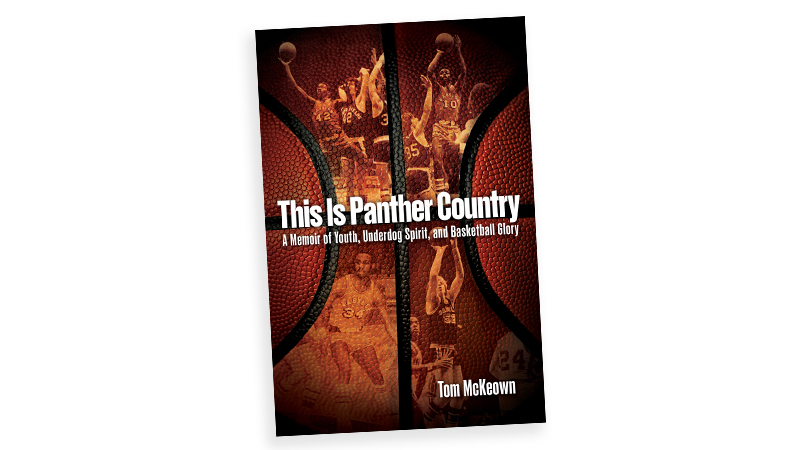Penny Lane Pub Beatle Connection
RVA's Penny Lane Pub owner, Terry O'Neill has a unique Beatles connection. Terry knew the Beatles as early as 1957, he figures, “when they were the Quarrymen.”
‘I Wish I’d Known They Were Going to be Good …
Terry O’Neill’s Cavern days put him in tight with the Beatles, but it was no big deal
— BY RAY McALLISTER —
— PHOTOGRAPHS BY MATT STANTON
Terry O’Neill knew the Beatles as early as 1957, he figures, “when they were the Quarrymen.”
O’Neill, the owner of Richmond’s Penny Lane Pub for 40 years now, helped manage various Liverpool clubs owned by a brewery back then. “They’d move me around from one to another to get them up running good.” He was mostly a manager, but “Big Scouse,” nicknamed for his size and Liverpool roots, was also a bouncer. Fighting in Liverpool clubs was common. O’Neill, 75, shares his stories while seated in his British pub. He is a tall and outgoing man, likely to call visitors “Love” or “Mate,” his accent still thick with the Liverpool of his youth. Beatles memorabilia adorns the wall (alongside that of his other passion, Liverpool’s soccer team): photographs and record covers and a “Penny Lane” 45, of course, and even Beatles toys. Some are valuable – and some, sadly, have been stolen – and all of it is invaluable. This is a place of memories. The Fab Four’s music is frequently on the sound system.
‘THE CAVERN WAS A BLOODY BASEMENT’
The group O’Neill first knew at the Cavern Club included John Lennon and some of his schoolmates, plus first Paul McCartney and then McCartney’s friend, George Harrison, even though for a while John had thought the 14-year-old Harrison was too young. Guitarist Stu Sutcliffe, an art school friend of John’s, was later added.
“I knew all the guys,” O’Neill says. He was at the Cavern long before they were. “I used to run it as a jazz club. When jazz died out, other music came along, like skiffle. Then skiffle died out.” The clubs were ready for a new music.
Liverpool, a seaboard town, was very poor, O’Neill says. Every young man seemed to have a chip on his shoulder. The evening’s entertainment was predictable: “If you didn’t get laid, you’d have a fight,” O’Neill says. “Whichever came first.”
The Cavern itself, though it appealed to the younger set, was appropriately hardscrabble.
“The Cavern was a bloody basement,” O’Neill says succinctly. The small dingy club, which did not sell alcohol, had just one door – a narrow 2 1⁄2-foot wide entrance. There were no toilets. Patrons had to go across the alley to use those of a nearby bar – or just use the alley, as was more common. The room had no ventilation, either. “The condensation was so bad, the walls were a mess. If you leaned up against them, your shirt was black.” Girls took off their shoes to dance on the sides of the seating area; their socks were always black afterward.
Into this scene came the group that would become the Beatles.
“John was like me, a smartass,” O’Neill says. “Paul was a nice little boy.” Others were in and out of the band.
Sutcliffe, the artist, never quite fit. “Stu, he was a good guitarist, too, and he didn’t want to be seen,” O’Neill says. He meant literally. During a performance, Sutcliffe would work his way behind one of the columns, O’Neill says, to be hidden from the audience. In early 1961, Sutcliffe would leave the band to return to studying art. He died a year later of a brain aneurysm.
Though Lennon was the group’s leader, it was the drummer of the early ’60s who had star quality. “The girls loved Pete Best more than any of the others,” O’Neill says. Best was good-looking – and his mother threw frequent parties, he says. Ultimately, none of that mattered. Producer George Martin and recording engineers would decide Best’s drumming wasn’t good enough, and Best ended up being replaced by Ringo Starr.
‘I WAS MORE FAMOUS THAN THEY WERE’
There is an irony to O’Neill’s relationship with the beginning Beatles. O’Neill had been a youth soccer player on one of the teams of the famed Liverpool Football Club. So fans would come up to get pictures of O’Neill in the doorway, virtually ignoring the band toiling anonymously in the background.
“I was more famous than they were,” O’Neill says, matter-of-factly. He laughs at the change in status. “If I had known they were going to be good, I would have been their manager.”
Instead, it would be local record store owner Brian Epstein who saw the group in the Cavern and went on to become their manager. The Beatles would soon be on their way and it wasn’t too long before they took the famous trip to America and The Ed Sullivan Show in 1964.
The Beatles were not convinced everlasting fame would follow.
“They all thought that they would be thrown out in 12 months,” O’Neill says. It had happened with other British artists who dared try to make it in America, like Lonnie Donegan and Cliff Richards: early acceptance but no staying power. “So they were waiting for the hand on the shoulder, saying it’s time to go.”
AFTER THE BEATLES
O’Neill actually beat the band to America. He had signed on to work as a carpenter on a cruise ship, then jumped ship with others in New York. He soon was helping build pubs in New York, including David Copperfield’s, where Lennon was often a visitor, surprising guests.
O’Neill was in New York for about 10 years. Then he and his wife, Rose, decided Richmond would be a better place to raise their small children. The O’Neills have been here for four decades now. Penny Lane Pub has lived in two locations, the most recent at Fifth and Franklin streets in downtown Richmond. Son Terrence manages the pub now, but Terry is often on scene.
Paul and John twice visited his first location in Richmond, years ago, while they were looking to buy a horse farm near Charlottesville, O’Neill says. The last time he saw either was 30 years ago, when he happened upon McCartney on a beach in the Bahamas. The two chatted like old chums, he says.
A decade ago, Lennon’s widow, Yoko Ono, visited him at the current pub. She gave him a limited edition print of the lyrics to Lennon’s song, “Working Class Hero.” It is on display at Penny Lane, as is a photograph O’Neill himself took of Lennon. In the photo, the Beatle is sitting on his couch at The Dakota, the apartment outside of which he would be killed in 1980. Yoko is leaning to the side, trying to escape the lens.
Elsewhere on display is an old photograph of McCartney, who by the time he signed it had been knighted by the Queen of England “To Big Scouse from Sir Scouse,” it says. O’Neill laughs. “That’s what makes it special. He didn’t sign it ‘Paul.’ He signed it ‘Sir Scouse.’ ”
So back then, before anyone knew, was there something about the Beatles that made it clear to him they would be superstars?
Did O’Neill realize when no one else did that these lads would remake the world of popular music?
“I had no idea,” he says now, laughing.
“Between you, me and the wall, I liked the Searchers better. They were the better group.”
Ray McAllister is editor of BOOMER. Reach him at Ray@TheBoomerMagazine.com.


